Characterisation of liquid interfaces
Liquid interfaces are characterized by an interfacial tension and their mechanic response to deformation. Unlike bulk liquids, interfaces are compressible. Their mechnical response therefore depends strongly on the kind of deformation applied: pure compression/dilation, uni-axial compression/dilation or shear. Moreover, interfaces containing surface active species are generally non-Newtonian, which is why their response is strongly frequency dependent. Unfortunately, for the moment, no single device exists which allows to fully characterize the static and dynamic properties of liquid interfaces. This is why we have a large number of devices in our lab each of which provides a specific kind and frequency of deformation.
Surface tension with the Wilhemy techique
The surface tension is measured by measuring very accurately the pulling force exterted by the interface on a plate in contact with the liquid. We have verious Nima devices, which are controlled by a computer software.
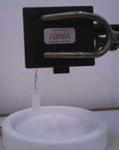 | 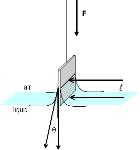 |
Surface tension and dilational interfacial rheology – oscillating bubbles and drops with the Tracker from TECLIS
Very accurate measurements of the interfacial tensions of gas/liquid or liquid/liquid interfaces are provided by analyzing the deformation of a drop or bubble under gravity. Following how this shape changes after rapid generation of the drop or bubble allows to measure how the surface tension changes with time as surface active species arrive at the interface (« dynamic surface tension »). Furthermore, by detecting the shape or pressure changes upon oscillating the drop or bubble volume one can determine the dilational visco-elastic properties of the interface. Typical frequency ranges are of the order of 1 Hz. We do all this (and more) in a fully automated way using the TRACKER device from TECLIS.
Dynamic surface tension at short times – The Maximum Bubble Pressure (MPB) technique from Sinterface
In order to generate bubbles from a nozzle one needs to overcome a pressure which is directly related to the surface tension of the gas/liquid interfaces. The faster one creates the bubbles, the less time the surface active species have to go to the interface, hence, the surface tension is higher. By verying systematically the frequency of bubble generation one can therefore obtain important information on the initial stages of the adsorption dynamics of surface active species.
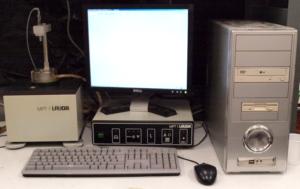 | 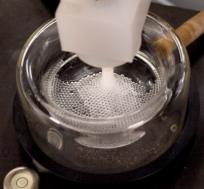 |
| The MBP device | Bubbles being generated by the MBP |
Surface pressure and interfacial rheology – the Langmuir troughs
Langmuir troughs are used to compress (generally insoluble) monolayers of surface active species on a liquid surface. Using the Wilhelmy technique, one follows the change of the surface tensions upon compression, which provides important information on the dynamic properties of these monolayers upon uni-axial dilation/Compression.
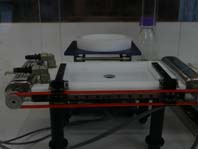 | 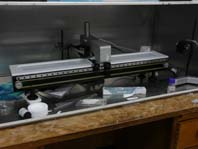 |
Brewster Angle Microscopy and Ellipsometry
Using the sensitivity of the Brewster angle of a liquid surface to its refractive index, we can image small changes of the surface composition by reflecting a laser beam of the surface at this angle. Whilst this technique remains qualitative, the ellipsometer allows us to use a similar technique to obtain the thickness of the monolayer.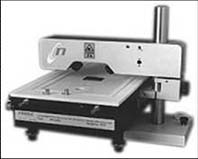
Interfacial shear rheology – two rheometers
Interfacial shear rheometers allow to put a bicone (Anton Paar) or a plate (Sinterface) into a gas/liquid or liquid/liquid interface. Oscillation or rotation of the bicone/plate shears the interfaces in a controlled manner and provides important information on their visco-elastic properties by analysing the response forces exerted by the interface on the bicone/plate.
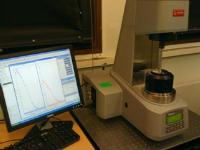 Anton Paar. | 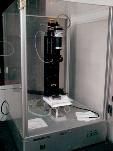 Sinterface. |
Electrocapillary Waves
In our home-built electrocapillary device, we use an oscillating voltage applied to a razor blade in order to generate propagating waves on the surface of a liquid (frequency range: 20-1500 Hz). A stepper motor with two mirrors moves the position of a laser beam which is reflected off the liquid surface in order to obtain the wave profile. Fitting this profile with an appropriate model allows us to obtain the visco-elastic properties of the interface under uni-axial dilation and in a large frequency range.
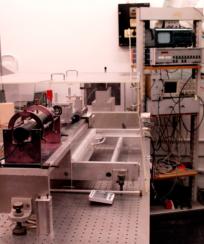 | 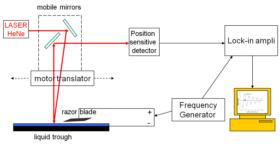 |
